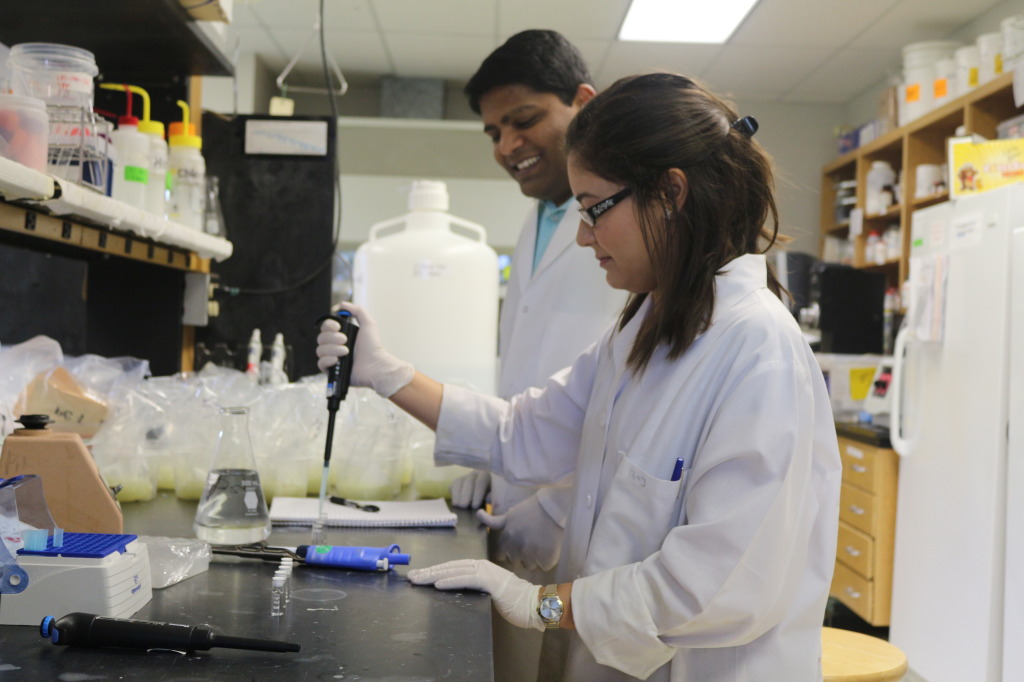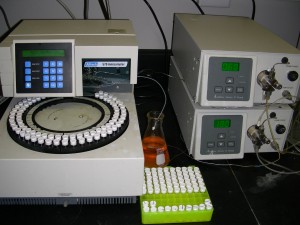Custom pyruvic acid analysis
The Vegetable and Fruit Improvement Center (VFIC) offers custom analysis services for pungency in onions with accuracy and at reasonable fees for producers, buyers, breeders, or researchers to both VFIC members and other interested companies. The VFIC has state of the art analysis laboratories equipped to test for pyruvic acid and the lab staff is fully trained and can provide pyruvic acid results within 3 days in most of ordinary samples of 10 bulbs.
Quality assurance in sweetness of onions is an important issue in both producer and buyers to ensure the consumers expectation and confidence, which promotes the loyalty to the store and makes them a repeat customer.
Chemistry of onion pungency development
Onion tissues produce distinctive volatile sulfur compounds when the cells are damaged mechanically. Trans S-1-propenyl- L-cysteine-sulfoxides isoallinin, the flavor precursor compounds, are hydrolyzed by the action of alliinase to produce thiopropanal S-oxide (tear-causing factor), pyruvic acid, and ammonia. Thiopropanal S-oxide further degrades into mono-, di-, or tri-sulfides through complex chemical reactions.
Onion pungency has been estimated by measuring the pyruvic acid concentration in the onion juice since the 1960’s using the Schwimmer and Weston (SW) method. We have further developed an automated system to avoid human errors and to reduce labor costs. This method uses the same principle as the original SW, but is automatic and should be more accurate and consistent.
Onion varies pungency greatly between bulbs or by locations, environments, and yearly. That is why we require 10-bulb samples for an accurate estimation of pungency of your onion sample.
Pyruvic acid content vs. pungency
The perception of pungency varies greatly with the individual. Generally, a bulb with pyruvic acid content of 3.5 μmoles/ml is very mild and one with 5 is fairly strong. The South Texas Onion Association set a guideline that the sweet onion should have less than 4.5 μmoles/ml. However, knowing the range of distribution of pungency in the group of onion samples is very important (minimum, maximum, and mean).
Onion juice preparation
We cut about 2 cm from the neck and bottom of the onion bulb and remove dry scales and then slice the bulb into pieces of about 2 cm size. Next, we blend the bulb tissue in a blender for about 2 min and filter the puree. We then collect about 10 ml of juice in a plastic vial and let stand at room temperature for about 30 min. The juice will be analyzed immediately.
Analysis
The onion juices are tested for the pyruvic acid content by using an automatic analyzer that we developed. Two pumps are used to deliver DNPH and NaOH solutions. Juice samples of 5 μl are injected into the system by an autosampler at an interval of 1 min. To obtain the final results, we use a detector set to 485 nm and record the peak area. Pyruvic acid content in the juice is calculated by using a standard curve between 0 and 10 μmoles/ml. Brix is measured by using a hand refractometer.
Reporting
We report bulb weight, pyruvic acid, and brix data for individual bulbs and the mean of the sample, as seen in the sample report above. Since there always will be unpredicted variations in onion bulb quality due to the natural variation in genetics, location, or environment, there will be a legal exemption statement added in the report.
Fees
For non-member: $40.0 per bulb
For VFIC members (exluding Friends of the Center): 20% discount
Pungency analysis request form
Contact Us
Any requests for information or detailed analysis pricing can be directed to:
Dr. Bhimu Patil
Vegetable & Fruit Improvement Center
1500 Research Parkway, A120
College Station, TX 77845
Phone: 979.862.4521
Fax: 979.862.4522
Email: b-patil@ag.tamu.edu


